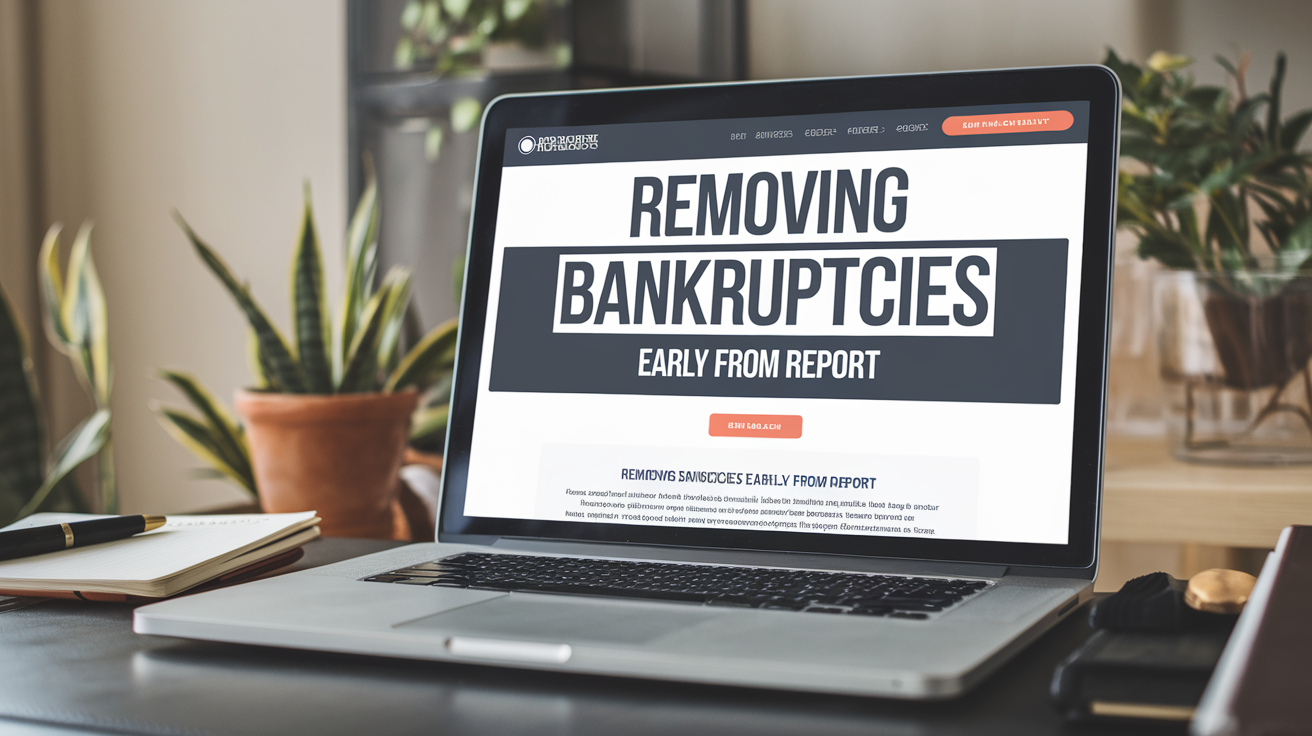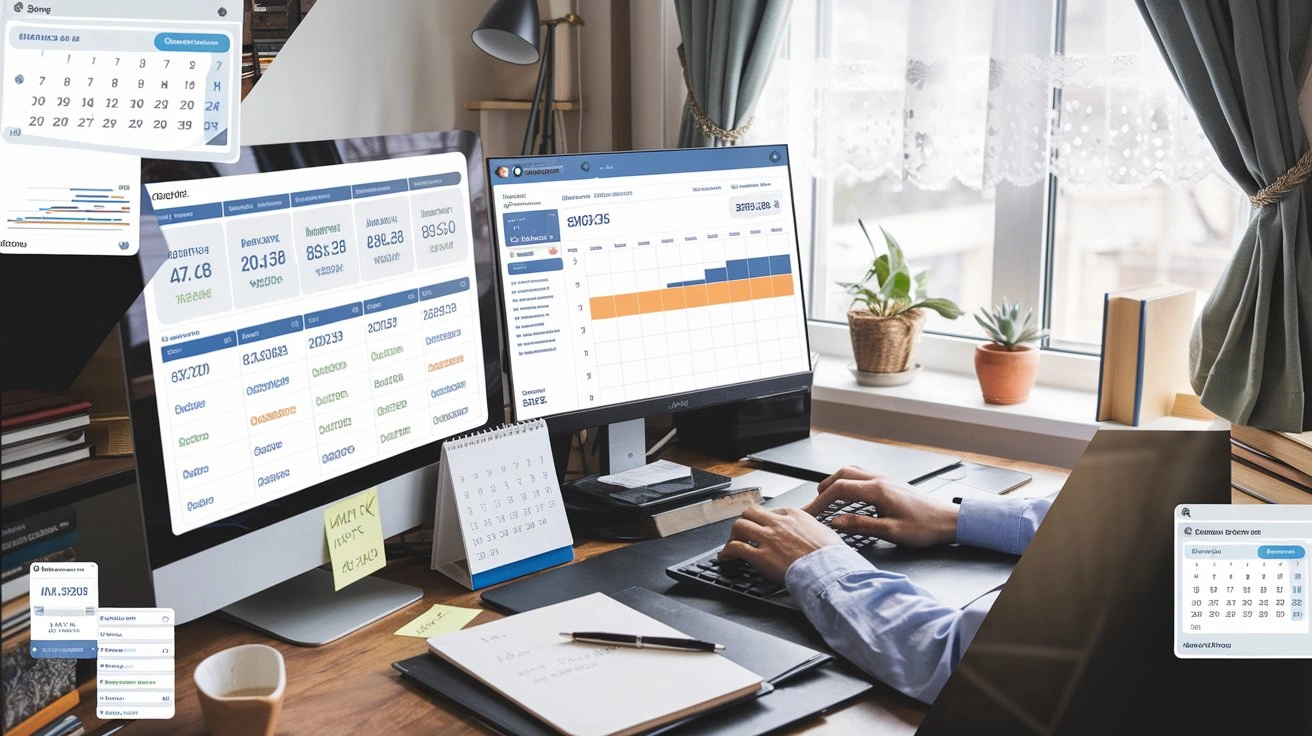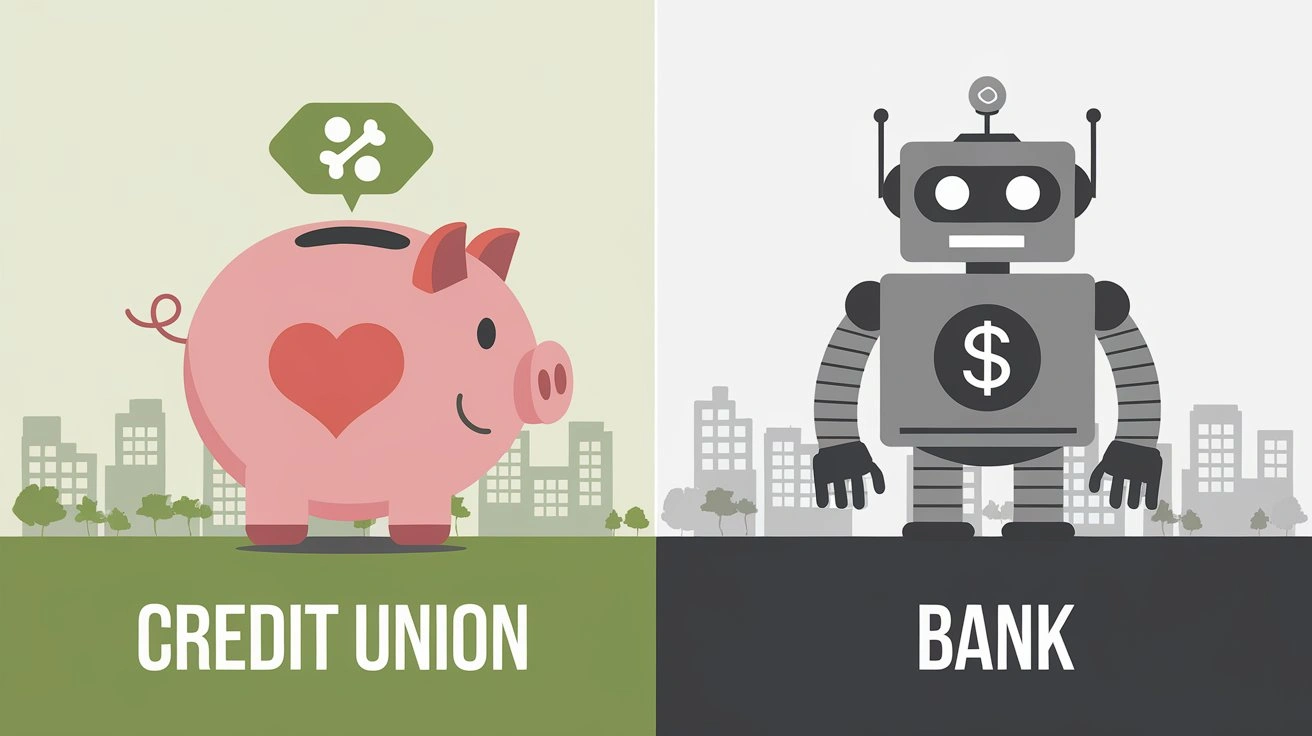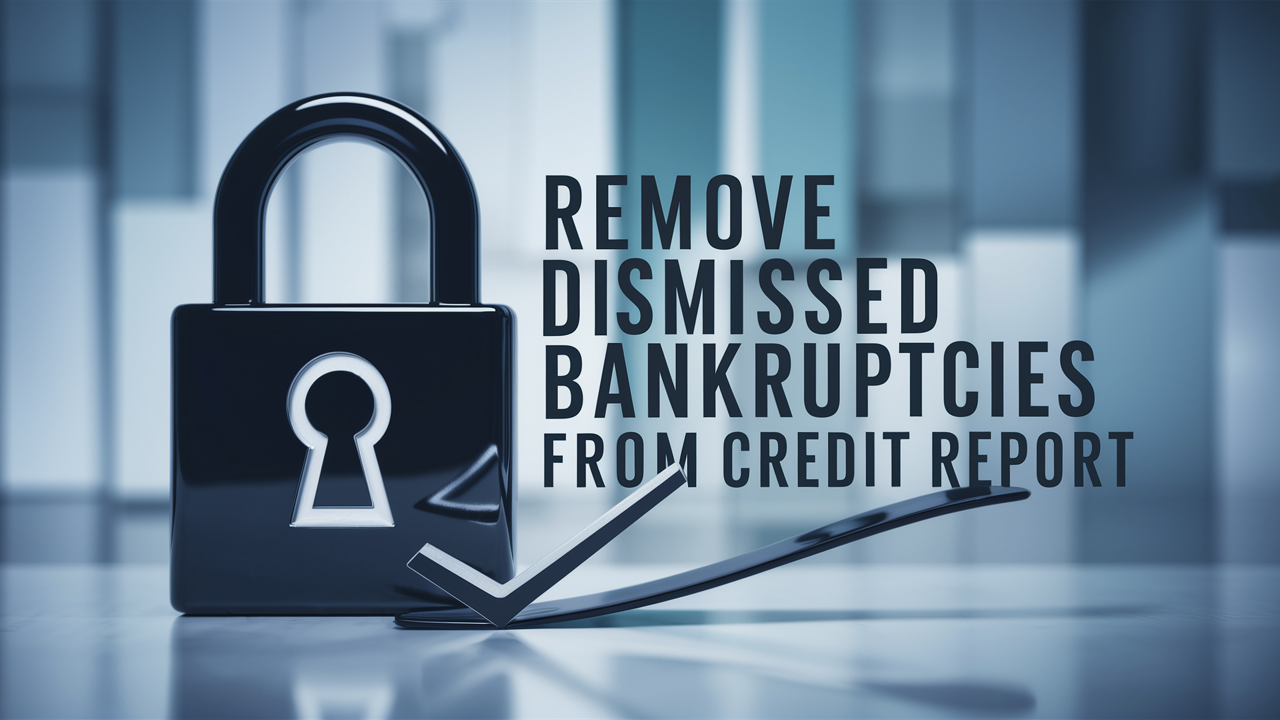Credit Repair: Removing Bankruptcies Early from Report

A bankruptcy filing can be tough. It can hurt your credit score for a long time. Even though it gives you a fresh start, getting back on your feet financially and fixing your credit may seem hard. Still, knowing your rights and choices for taking bankruptcy off your credit report can help you take charge of your credit health.
Understanding Bankruptcy and Its Impact on Credit Reports
Bankruptcy is a legal process that helps people or businesses who have too much debt to pay off. When you file for bankruptcy, it becomes public. This means it can affect your ability to get credit for several years. Lenders check credit reports to decide if they want to give you money. A bankruptcy filing shows that you are a higher risk.
How bankruptcy affects your credit score depends on a few things. This includes your credit history before you filed and the type of bankruptcy you chose. Sadly, Chapter 7 bankruptcy, known as liquidation bankruptcy, stays on your credit report for 10 years. Chapter 13 bankruptcy, which has a repayment plan, stays for seven years.
The Basics of Bankruptcy on Your Credit Report
When you file for bankruptcy, the bankruptcy court takes care of the process. Your credit report will show what type of bankruptcy you filed, like Chapter 7 or Chapter 13, and also the filing date. For example, if you filed for Chapter 7, your report will show that too. It's important to know that the court does not send this information to the credit bureaus.
Bankruptcy filings are part of public records. This means that credit bureaus can see and update this information on your credit report. Lenders and creditors use this information to check your creditworthiness. This can affect how easily you can get loans or credit cards or even rent a home.
Even though bankruptcy on your credit report may look bad to lenders, its effect gets smaller over time. If you show good financial habits, like paying your bills on time and managing your debt, your credit score will slowly go up.
The Duration of Bankruptcy Records and Their Effect
A bankruptcy filing can greatly affect your credit history. It may make it harder for you to get new credit with good interest rates. Lenders see people with bankruptcy as high-risk borrowers. Because of this, they are more careful when giving out credit.
The negative impact of bankruptcy on your credit report gets smaller as time goes by. The further you get from the filing date, the less it will affect your creditworthiness. Still, you might experience higher interest rates on loans and credit cards during this time. This can make it tough to get your finances back on track.
You should remember that a bankruptcy filing is just a bump in the road. It does not have to shape your financial future. With smart money management, you can improve your credit score over time. This way, you'll also regain access to better credit options.
Legal Grounds for Bankruptcy Removal Before Its Time
It's not possible to remove a bankruptcy record from your credit report for 7 or 10 years. However, the Fair Credit Reporting Act (FCRA) allows you to dispute any wrong or incomplete information.
If you think the bankruptcy entry on your credit report is not right, you can dispute it. You can ask for it to be taken off.
The FCRA requires credit bureaus to look into any disputed information in a reasonable amount of time. If they can't prove the information is accurate, they must remove it from your credit report.
The Fair Credit Reporting Act (FCRA) Explained
The Fair Credit Reporting Act (FCRA) is very important for keeping credit reports accurate. It gives consumers the right to challenge and fix any mistakes found on their credit reports. This federal law requires credit bureaus to quickly check disputed items to keep people's credit history honest. According to the FCRA, credit reporting agencies must offer consumers free credit reports every year. This helps people check their credit health and fix any mistakes. It promotes fairness and responsibility in the credit reporting system.
Exceptions and Special Circumstances for Early Removal
While most people know that bankruptcy records stay for a set time, there are some cases where they can be removed early. This usually happens if there is a mistake in how the bankruptcy was handled or if there are special reasons related to the filing.
For example, if someone stole your identity and filed for bankruptcy in your name without you knowing, you can give proof to the credit bureaus and ask them to take it off your record. Also, if a mistake by the bankruptcy court caused your bankruptcy to be discharged, you may take legal steps to have it removed from your credit report.
But keep in mind that these cases are not very common. It is the person's responsibility to show they are right and that there are good reasons to remove the record early.
Step-by-Step Guide to Dispute Bankruptcy Entries
To dispute bankruptcy entries on your credit report, you need to get your reports from the three main credit bureaus: Equifax, Experian, and TransUnion. You can check your reports for free once a year at AnnualCreditReport.com. Make sure to look over each report carefully for any mistakes. Write down any errors related to your bankruptcy filing, like a wrong filing date or chapter.
After you find the mistakes, start the dispute process. You can contact the credit bureaus online, by mail, or by phone. When you file the dispute, explain the errors clearly. Include documents that support your claim, like court orders or discharge papers.
Identifying Inaccuracies on Your Bankruptcy Record
The first step in the dispute process is to check your credit report carefully for any incorrect information. You need to make sure your details are right. This includes your name, address, and Social Security number, along with details about the bankruptcy filing.
Be sure to check the filing date, chapter, and discharge date. Look for mistakes like having a Chapter 7 listed instead of a Chapter 13. Also, if you see debts that should have been canceled during bankruptcy, such as credit card debt or medical bills, write them down.
When you find errors, it is important to collect documents to support your dispute. These documents can include court orders, bankruptcy discharge papers, or any messages you have received from creditors about the discharged debts.
Initiating the Dispute with Credit Bureaus
You can start the dispute process online, by phone, or by mail. Most credit bureaus have online forms for filing disputes. This makes it easy to report credit report errors. You will have to give your personal information. This includes your full name, address, date of birth, and Social Security number.
When you describe what you are disputing, be clear and give as much detail as you can. For example, if the filing date of the bankruptcy is wrong, mention the correct date and add any supporting documents.
The credit bureau will look into your dispute and start an investigation with the source of the information. This is usually the creditor or lender that reported the bankruptcy. They need to finish the investigation within 30 days. If they find that the disputed information is wrong or cannot be verified, they must fix or remove it from your credit report.
Proactive Measures to Boost Your Credit Post-Bankruptcy
Getting back on track with your money and credit score after bankruptcy takes a proactive plan. It is not just about waiting for that negative mark to go away from your credit report. You need to actively work on rebuilding your credit.
You can do this in a few ways. Start by getting secured credit cards. You can also become an authorized user on someone else's card. It's important to keep a low credit utilization ratio and to pay your bills on time. Even small steps toward good money habits can help your credit score a lot over time.
Strategies for Credit Rebuilding and Management
Rebuilding your credit after bankruptcy requires you to create a positive payment history. This is very important for a good credit score. You should pay all your bills on time. This shows that you are responsible for your finances to creditors and lenders. Set up automatic payments or reminders to help you remember when to pay.
You can apply for new credit but do this carefully. One option is a secured credit card. With this card, you deposit a certain amount as collateral. This amount usually matches your credit limit. It makes it safer for the lender and lets you show that you can use credit responsibly. As you build a good payment history, you can move to unsecured credit cards that have better terms and rewards.
Keep your credit utilization ratio low. This means using a small percentage of your available credit. If you use too much, it can hurt your credit score, even if the limit is low. Try to use no more than 30% of your credit limit.
Importance of Secured Credit and Loan Options
A secured card can help you rebuild your credit after bankruptcy. Unlike unsecured credit cards, secured cards need a security deposit. This deposit serves as collateral. It reduces the risk for the lender. As a result, they may approve people with a bankruptcy on their credit report more easily.
Secured cards help you create a good payment history. They report your on-time payments to the credit bureaus. By using credit responsibly and making payments on time, you can steadily improve your credit score.
Another option is a credit-builder loan. This loan is meant for people who want to rebuild their credit. With this loan, you borrow a small amount that is kept in a savings account. You make regular payments for a set time, normally between 6 and 24 months. These payments are also reported to the credit bureaus. This helps you establish a positive credit history and boosts your credit score.
When to Consider Professional Credit Repair Services
Navigating credit repair can be tough, especially after bankruptcy. You can work on improving your credit score by yourself, but sometimes it's good to get help from professionals. If you find it hard to read your credit report, spot mistakes, or need help to dispute errors, think about reaching out for assistance.
Credit repair companies focus on helping people raise their credit scores. They do this by disputing false negative items, talking with creditors, and creating plans to rebuild credit. They can also help you work better with the credit bureaus, so you spend less time and effort fixing credit problems.
Evaluating the Need for a Credit Repair Agency
Before you choose a credit repair company, it's important to think about what you need and look into different companies. Check how well they are known, their experience, and how successful they have been with cases like yours. Make sure you understand their fees, the services they provide, and how long it might take to see results.
Keep in mind that good credit repair companies cannot remove correct information from your credit report. They are there to help you with the legal process of disputing wrong or unverified negative items. Be careful of any company that claims to offer quick fixes or unrealistic results, as these are often scams.
In the end, it is your choice whether to hire a credit repair company. If you feel lost in the process or have trouble making progress, getting professional help might be a good investment. Just remember, improving your credit score takes time and requires steady effort and responsible financial habits.
DIY vs. Professional Credit Repair: What's Best for You?
Choosing between DIY credit repair and enlisting professional services depends on your circumstances, your comfort level, and the complexity of your credit issues. DIY credit repair can be empowering, allowing you to take control of your financial future and save on professional fees.
However, professional credit repair services can be beneficial if you lack the time or expertise to navigate the credit repair process effectively. They can help identify errors on your credit report, craft compelling dispute letters, and negotiate with creditors on your behalf.
To help you decide the best course of action, consider the following table highlighting the pros and cons of each approach:
| Feature | DIY Credit Repair | Professional Credit Repair |
| Cost | Free or minimal cost | Can range from a few hundred to several thousand dollars |
| Time commitment | Requires time and effort to research, monitor, and dispute errors | Less time-consuming, as the agency handles most of the tasks |
| Expertise | Requires basic knowledge of credit reporting laws and procedures | Credit repair specialists have expertise in credit reporting and dispute resolution |
| Control | You have complete control over the process | You're entrusting your credit repair to a third-party |
Conclusion
In conclusion, it is important to understand bankruptcy and how it affects your credit report. By following the right steps and finding mistakes, you might be able to remove bankruptcies from your record sooner. After bankruptcy, you should take steps to rebuild your credit. Exploring secured credit options is a good way to help with this. If you need help, think about using credit repair services. It’s important to choose between expert help and doing it yourself. With careful choices and hard work, you can improve your credit standing. If you need more advice, talk to trusted credit repair agencies to help you get back on track with your finances.



